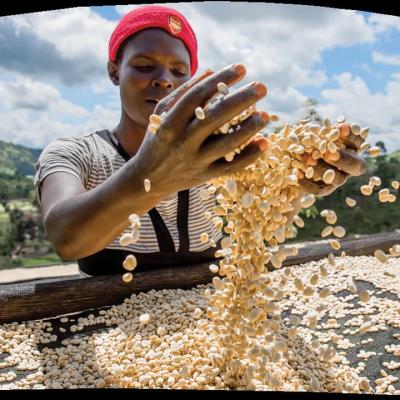
TIP: You can save products to
your favorites list if you log in
One of our fave origins is back! Only about the size of the US State of Maryland, Rwanda is one of the smallest and most densely populated countries in Africa. With approximately 90% of Rwanda's 11 million inhabitants working in agriculture, the countries many mountains and hills seem endlessly terraced and are intensively cultivated.
Introduced by German missionaries in 1904, coffee production started to ramp up in the 1930s under Belgian rule. Coffee has been the primary source of income since then, with more than 400,000 small-scale farmers relying on it for their livelihoods. These farms are extremely small, with “coffee gardens” of about 150 trees each. As part of the government's recovery efforts following the genocide of 1994, private central washing stations started opening in 2001. Today there are more than 330 washing stations throughout the country. The growth of these washing stations has increased quality considerably, prompting at least a 40% premium to Rwanda's export value.
The word Ishema means “pride” in the Rwandan language, and the young members of the Ishema Youth Association take pride in the coffee they grow and promote. Working with the Abakundakawa Cooperative in the highlands of Rushashi in Northern Rwanda, this group has been active only since 2019. Until recently, most member farmers in Abakundakawa were of the older generations, often parents or grandparents, with less than 100 youth being members of the co-op. Since Ishema began in 2019, membership has grown to 400 young people. They list their goals as: improving the quality of the coffee produced in Abakundakawa, reducing rural migration by creating rural jobs for young people, and promoting family succession planning by providing agricultural training to the next generation of farmers.
Ishema's coffee is grown on farms between 1,700 and 1,900 meters above sea level, and they grow primarily bourbon and Jackson varieties. They have two harvests, their main harvest between March-June and a fly harvest from September-November. Farms in this area tend to be very small, with only 1-2 hectares each, so harvesting tends to be a family activity. Once they have picked the coffee, the farmers sell the red to the local washing station where the coffee is washed and then dried on raised beds.




